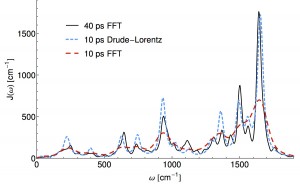Good books to grab if you want to study electronic structure theory:
The obvious one is Szabo & Ostlund (~7$ on ‘zon) although it’s nowadays quite antiquated.
If you can instead find Helgaker & Jorgenson’s book, I would read it instead.
To learn about Density Functional Theory, Burke’s free manifesto is good.
Of course electronic structure is just a drop in the bucket of science, and I have found these other books quite illuminating:
Tuckerman’s Stat. Mech
Tannor’s quantum dynamics textbook
Nitzan’s book about Condensed Phase Chemical Dynamics
Quantum Many-Body textbook of Fetter and Walecka (a cheap dover gem)
You won’t meet many students who have a mastery of all-of-the above textbooks, but each is very useful for it’s own reasons.
Good papers for all young theoretical chemists to read:
This is a by-no-means exhaustive, subjective list of seminal papers in the area of theoretical chemistry that I will add to slowly. Reading these papers is useful both for the subject of the paper, but also to see how genuinely transformational science is done. To students with a good background this list may seem silly, but to students just beginning it could be quite useful.
General:
Metropolis: http://jcp.aip.org/resource/1/jcpsa6/v21/i6/p1087_s1
Transition state theory: http://jcp.aip.org/resource/1/jcpsa6/v3/i2/p107_s1
Path-Integral:
Parinello & Rahman: http://jcp.aip.org/resource/1/jcpsa6/v80/i2/p860_s1
AIMD:
CPMD: http://link.aps.org/doi/10.1103/PhysRevLett.55.2471
Tully: http://jcp.aip.org/resource/1/jcpsa6/v101/i6/p4657_s1
Quantum Many-Body Problem:
The Failure of PT: http://link.springer.com/article/10.1007%2FBF00698753?LI=true
Coupled-Cluster: http://pra.aps.org/abstract/PRA/v5/i1/p50_1
DMRG: http://prl.aps.org/abstract/PRL/v69/i19/p2863_1
DFT:
Kohn-Sham: http://prola.aps.org/abstract/PR/v140/i4A/pA1133_1
Becke’s functional ingredients: http://link.aps.org/doi/10.1103/PhysRevA.38.3098
and: http://jcp.aip.org/resource/1/jcpsa6/v98/i7/p5648_s1












